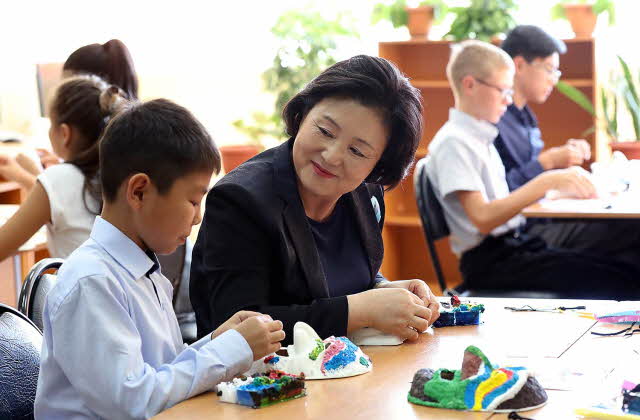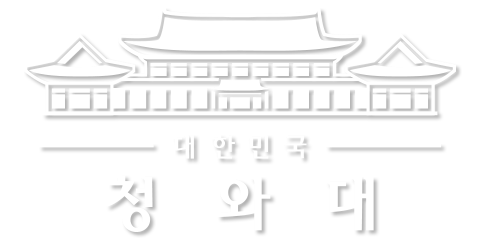이 웹사이트는 제19대 대통령 임기 종료에 따라 대통령기록관이 「대통령기록물 관리에 관한 법률」에 의해 이관받아 서비스하는 대통령기록물입니다. 자료의 열람만 가능하며 수정 · 추가 · 삭제는 불가능합니다.
다만, 「개인정보보호법」에 의하여 개인의 정보를 보호받기 원하시는 분은 관련 내용(요청자, 요청내용, 연락처, 글위치)을 대통령 웹기록물 담당자(044-211-2253)에게 요청해 주시면 신속히 검토하여 조치해 드리겠습니다. 감사합니다.
SPEECHES & REMARKS
BRIEFINGS
The First Lady Visits Cultural Center for Ethnic Koreans in Russia and Pays Tribute at Monument to Independence Activist Lee Sang-seol

First Lady Kim Jung-sook, who is traveling with President Moon Jae-in on his visit to Russia to attend the Eastern Economic Forum, made a visit to a cultural center for Korean Russians located in Ussuriysk, Primorsky Krai (Russian Maritime Province).
The center was established to mark 140 years of the migration of Koreans to Russia. Looking around the exhibition halls showing the history of ethnic Koreans in Russia, First Lady Kim said that she was choked up thinking about our ancestors who had come this far empty-handed and still devoted themselves to the independence movement.
During her stop at a children’s culture class, the First Lady joined the children in making Hahoetal masks, traditional Korean masks, and conversed with them about their dreams.
The First Lady also visited a practice of a choir, named Chinseon composed of elderly second and third generation descendants of ethnic Koreans. Though many members of the choir were not good at Korean, they sang the famous Korean folk song Arirang together with tears in their eyes. Afterwards, the First Lady shook hands with all the members of the choir and expressed her gratitude to them for not forgetting about Korean culture while living in a faraway country.
Next the First Lady paid her respect at the monument to independence movement leader Lee Sang-seol, which stands on the banks of the Razdolnaya River in Ussuriysk, Russia.
Lee Sang-seol together with Lee Jun and Lee Wi-jong comprised the Secret Emissary that was dispatched to the International Peace Conference in The Hague, the Netherlands in 1907. Their mission was to declare the invalidity of the Japan–Korea Treaty of 1905, also known as the Eulsa Treaty or Protectorate Treaty, and to protest against the Japanese imperialists` pillage of Korea`s sovereignty. Though he was given a death sentence by a Japanese court, he continued to carry out anti-Japanese activities in Russia until he passed away in 1917 of natural causes.
Before he passed away without being able to achieve the liberation of his country, Lee left his last wish that his body and belongings be burned, the ashes be scattered on the water and ancestral rites for him not be held. According to his wish, his remains were spread on the Razdolnaya River. Lee’s monument is located at the very spot where his remains were scattered.
Among those visiting the monument today were his granddaughter Lee Hyeon-won, 83, and his great-granddaughter Lee Nam.
Noting that this year was the 100th anniversary of Lee’s death, the First Lady said, it was, thus, all the more meaningful for her to be there. She went on to say that more than anything else, she was grateful that his descendants continued to live nearby from one generation to the next. She also said she would always remember the cause of the patriotic martyrs.



